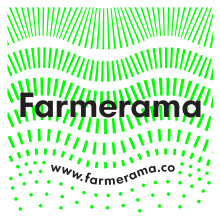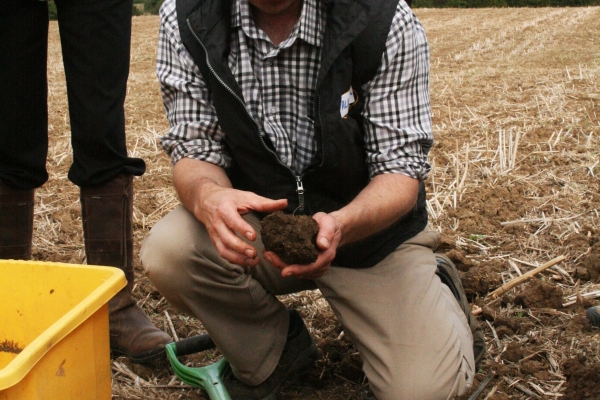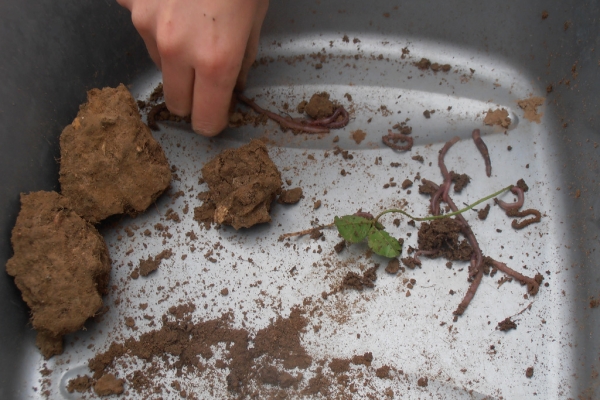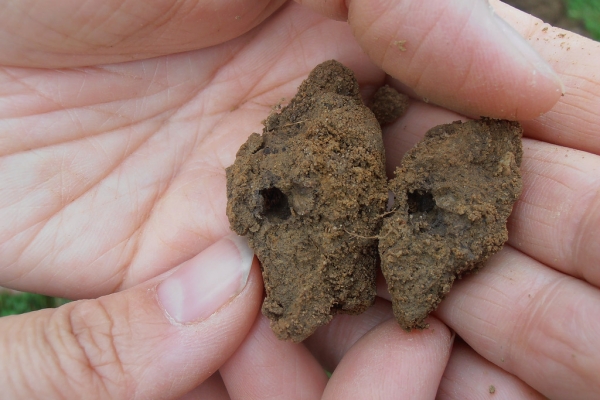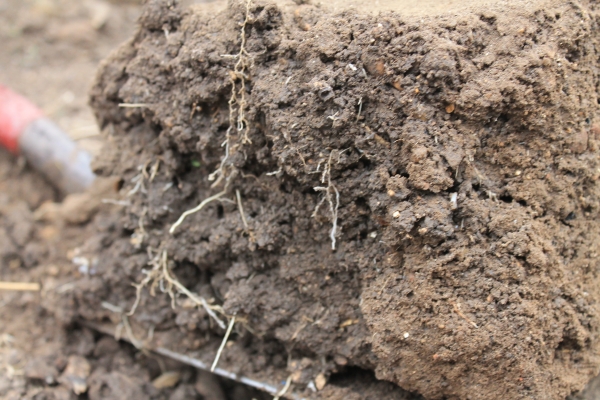A chance to get down and dirty with your soils
New app to help farmers to monitor soil health
I arrived at Whittington Lodge Farm in the Cotswolds on a very grey and damp day in August. A cheery Ian Boyd greeted me and immediately put the kettle on. At first Ian seemed very wary as I told him I’d made an app that was going to help him monitor his soil health. I don’t blame him for being suspicious, I am a British girl with a distinctly American accent, wearing leopard-print leggings and claiming that I had created an app that could help him out in the field. Who wouldn’t be suspicious!?
I was there on the invite of Niels Corfield (a soil health advisor) and the Pasture Fed Livestock Association (PFLA). The PFLA had run a series of events bringing together farmers, soil scientists, advisors and soil enthusiasts to find a way that farmers can monitor the ‘pulse’ of soils themselves. They all agreed on a collection of visual tests that were helpful indicators of soil health, and most importantly, all doable on farm without help.
Niels decided to put the tests into practice on farm and so here we were at Ian Boyd’s farm. Back at the misty farm, Niels, Ian and I bundled into the trucks with our simple tools – a spade, a ruler, a few plastic bags, garlic crusher and a refractometer. Of course Ian had his phone.
We trundled over to a field called Fir Hill and got to work. Ian downloaded the app on his phone, and he walked around the field counting the % of undesirables (i.e weeds), % of bare earth, no. of grass species, no. of broadleaves and more, every 80 steps or so in a vague W shape across the field. Ian recorded it all himself using the app – no training needed.
By lunchtime Ian was so excited, all reservations abandoned, he was telling everyone about how easy he had found the different visual tests Niels had put together, and that the app he used to record it all made it so easy to collect the results.
For a farmer to suddenly become so enthusiastic about an app (not a particularly common occurrence I believe!) was a clear sign that we were creating something of value. This was the birth of the Soilmentor app. Since then, together with Niels, we setup 3 other PFLA farms using the app and testing their soils. Others had similarly enthusiastic responses, Fidelity Weston (pictured below) at Romshed Farm told us, “In 30 years of farming I have never looked at my soils in this way. With the app I can easily collect information and learn from it.”
In order to help more farmers monitor their own soils we have created a freely accessible guide with all the details you need to do each soil test including how often, where and when to do them. So before going out in the field you can read the guide, determine which tests you want to do, which fields you want to do them in and when you want to do them each year. We recommend you start by just monitoring 4-6 key fields as indicator fields. It’s all about getting enough data to understand how different management practices affect your soil and your bottom line, without it taking too much time. As the app is created by farmers, for farmers, we’ve made sure it’s simple to use and does just what we need, no faff.
This is a chance to get down and dirty, to dig in, to smell, feel, touch your soils and see what they are made of.
The app lists all the soil tests you can do in each field and makes it easy to record the results of each test on a field by field basis. Back at base you can login online to see all your results for each field. You can compare earthworm counts (and much more) for different fields, compare photos of your soil this year to last year and if there is something you aren’t sure about you can always share the results and photos with your agronomist or farming groups. Plus Niels is always on hand as a great soils advisor!
We also have a community forum where you can ask others about what they have found doing different tests, what worked for them or share something you have seen.
We are excited to support farmers to build their soil health and are here to listen and learn as we go. We can work together to ensure on-farm soil monitoring enables farmers around the UK to better understand farms above and below ground so that we can effectively manage our farming businesses and build soil health as we go.
You will soon be able to read more about the app on Agricology, but in the mean time, head to our website to read more, to browse case studies of farmers already using it, and to take advantage of our 50% launch offer if you buy before the end of Feb (£60 for the year). You can also see our free online soil testing guide there.
All photo credits: Farmerama


